Why I will "March for Science"
Nukie Nuclear Power Plant has issued a SCRAM alert and an emergency shutdown has been declared due to a mandatory employee science march.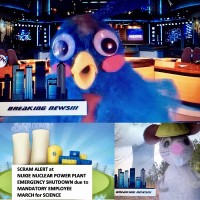
The ANS Nuclear Cafe is a blog owned and edited by the American Nuclear Society. Information contained on the ANS Nuclear Cafe has been provided by numerous sources. Therefore, the American Nuclear Society assumes no responsibility or liability for the accuracy of information contained herein. DISCLAIMER: The views expressed in posted articles do not necessarily reflect the views of the American Nuclear Society. The views expressed here are those of the individual authors. ANS takes no ownership of their views. The American Nuclear Society assumes no responsibility or liability for any use or operation of any methods, products, instructions, or ideas contained on this site.

A message from Electrical Builders, Ind.
America’s Top Performing Nuclear Plants Rely on Electrical Builders, Industries to Expand and Extend the Life of Their Critical Electrical Assets
Nukie Nuclear Power Plant has issued a SCRAM alert and an emergency shutdown has been declared due to a mandatory employee science march.
Editor's note: The ANS Nuclear Cafe is proud to feature
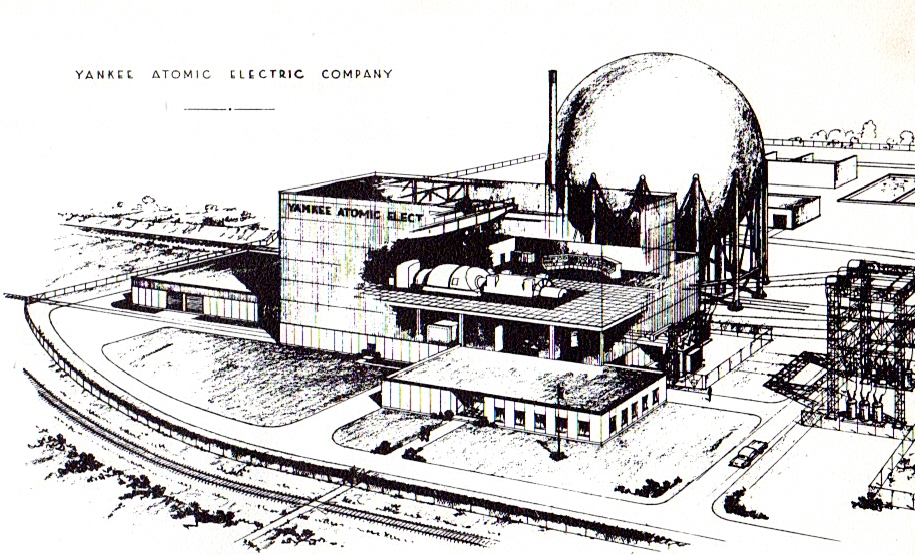
The dawn of the atomic energy age had only just broken in 1954 when representatives of the major electric utility companies of New England met to form a new venture. On the very next day after President Dwight Eisenhower signed the (amended) Atomic Energy Act of 1954, these representatives launched, in their first meeting, the consortium that would build one of the most successful early nuclear plants of them all. This plant was to be owned by a generating company, not a utility, and would sell atomic generated electricity to the component owner-members. The company would soon be named the Yankee Atomic Electric Company and would set a precedent for several following "Yankee" plants.
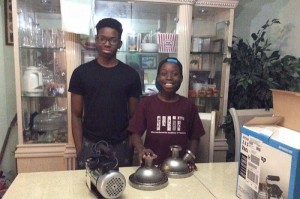
Steven (L) and Anthony (R) Udotong. Steven is well on the way to constructing a nuclear fusor, some of whose components are seen here. Photo courtesy Steven Udotong.
Steven Udotong, a 16 year old high school junior from Cinnaminson, N.J., recently made headlines as he prepares to become one of only a handful of young men or women to privately construct a nuclear fusor (a device using the inertial electrostatic confinement concept to fuse deuterium gas molecules) on his own time. ANS contacted Steven via email for information about the project, and his opinions about nuclear energy, nuclear technologies and the place of nuclear technologies in education.
Westinghouse Electric announced very early this morning that it had filed for bankruptcy protection under Chapter 11 of the U.S. Bankruptcy code, according to an official press release. This event quickly follows the wide reporting yesterday evening that Toshiba's board of directors had voted to approve the declaration of bankruptcy by Westinghouse, which is Toshiba's subsidiary. News releases from the various concerned parties are out this morning in response, and we have our first glimpse of how this process might affect the Westinghouse AP1000 plants under construction at V. C. Summer (owned by SCANA, SCE&G and Santee Cooper) and at Plant Vogtle (whose majority owner is Georgia Power, a subsidiary of Southern Company).
The impact of intermittent electricity on the power grid is sometimes difficult to understand or explain. Electricity is not a product you can see or touch and is often treated like any other consumer product. Electricity is different from other usual products, however, and I thought that a good way to explain it is to compare it to a game of musical chairs with slightly modified rules.
Chien-Shiung Wu is the last of my three-part series for Women's History Month. Born in China in the early 1900s, Chien-Shiung was blessed with a family that always encouraged her to pursue her educational aspirations. After immigrating to the United States during the Great Depression she successfully received a Ph.D. in physics from the University of California, Berkeley. Like Maria, Chien-Shiung was then recruited to join efforts in the Manhattan Project, even though she had no idea what the project is about.
Today's short video shows the emission of radiation in a cloud chamber. Enjoy!
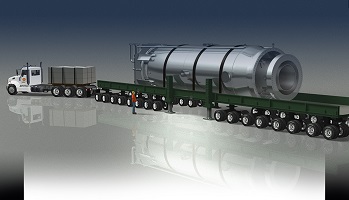
SMR on trailer courtesy NuScale Power
On March 15, 2017, the U.S. Nuclear Regulatory Commission (NRC) announced that it had accepted NuScale Power's application for Design Certification of its innovative Small Modular Reactor (SMR) design. This begins what will be, according to NuScale, an approximately 40-month process until the design is certified by the NRC.
 There was a time when the mPower SMR (Small Modular Reactor) was the perceived industry leader. The consortium behind it won the first Department of Energy (DOE) funding award to move such a design through to licensing at the end of 2012, and it was planned that a two-reactor Generation mPower nuclear plant would be licensed and constructed at the TVA Clinch River site. Now, just over four years later, the effort - which has been through a fairly recent restructuring - has been ended by its participants.
There was a time when the mPower SMR (Small Modular Reactor) was the perceived industry leader. The consortium behind it won the first Department of Energy (DOE) funding award to move such a design through to licensing at the end of 2012, and it was planned that a two-reactor Generation mPower nuclear plant would be licensed and constructed at the TVA Clinch River site. Now, just over four years later, the effort - which has been through a fairly recent restructuring - has been ended by its participants.
Right now, in the United States, citizens have become active advocates on many subjects. Ever since the last election, congressional phone lines have been swamped. The March issue of the New Yorker magazine featured an article that discussed whether or not phone calls to Congress are still effective. In this new context, how will an advocate get her voice heard? (If you are reading the New Yorker article...spoiler alert...write a letter to your representative instead of calling.)
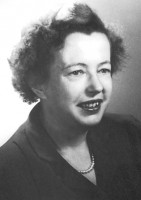 Shortly after Cecelia Payne-Gaposchkin presented her work on the sun in 1925, Maria Goeppert-Mayer was beginning to make her own waves in physics. After receiving her Ph.D. in physics in her home country of Germany, Maria and her new husband Joseph moved to Baltimore, where he had just been given a position as a professor. Maria also wanted to teach but was not allowed, only being given a job as an assistant working in a makeshift laboratory in a small attic.
Shortly after Cecelia Payne-Gaposchkin presented her work on the sun in 1925, Maria Goeppert-Mayer was beginning to make her own waves in physics. After receiving her Ph.D. in physics in her home country of Germany, Maria and her new husband Joseph moved to Baltimore, where he had just been given a position as a professor. Maria also wanted to teach but was not allowed, only being given a job as an assistant working in a makeshift laboratory in a small attic.
In the March 2017 issue of Nuclear News
Editors Note: This is a three-part series by Rita in honor
While I was watching the Third Way Advanced Nuclear Summit on February 21, a wide range of topics was also being discussed on Twitter related to the various sessions. One of the things that was brought up was the large number of private companies and universities now engaged in the development of advanced reactors. It occurred to me-and I said as much on Twitter-that some consolidation of the industry was unavoidable. In fact, it's probably necessary. There's historical precedent for it.
For me as a student, attending the ANS Student Conference is the highlight of my spring semester. Is it because I get to meet new professionals in the field and learn what they do? Or is it because I get to reconnect with other students from around the nation that I only get to see at conferences? Or maybe it's that I get to travel to another university and learn about their nuclear program and the city? Really, it is a combination of all these things that make me very excited to be attending the 2017 ANS Student Conference: "Dispelling Nuclear Myths" at the University of Pittsburgh, April 6-9.
Georgia Power has released the Fourth Quarter 2016 "Vogtle Timeline" video, detailing progress at the site where two new AP1000 nuclear units are being constructed. This video is just under ten minutes and is a solid addition to this well-received documentary series.
A wide range of engaging speakers from variety of nuclear companies, start-up initiatives, and government agencies participated in the fourth annual Advanced Reactors Technical Summit IV & Technology Trailblazers Showcase. It was comprised of nuclear industry who have improved upon engineering in many areas and have a strong knowledge of what technical and political problems need to be addressed. They came together to help bring ideas to overcome some of the challenges the industry is facing and are making progress on future concerns.